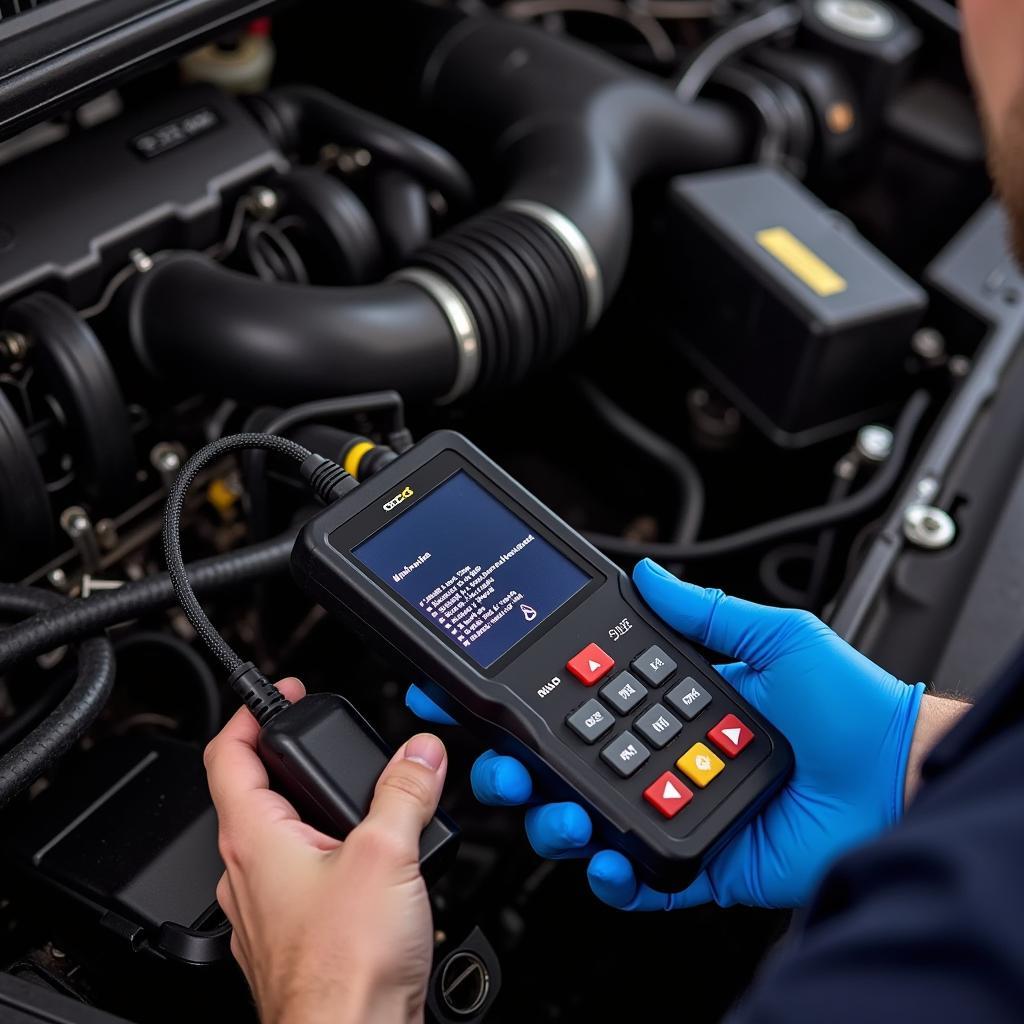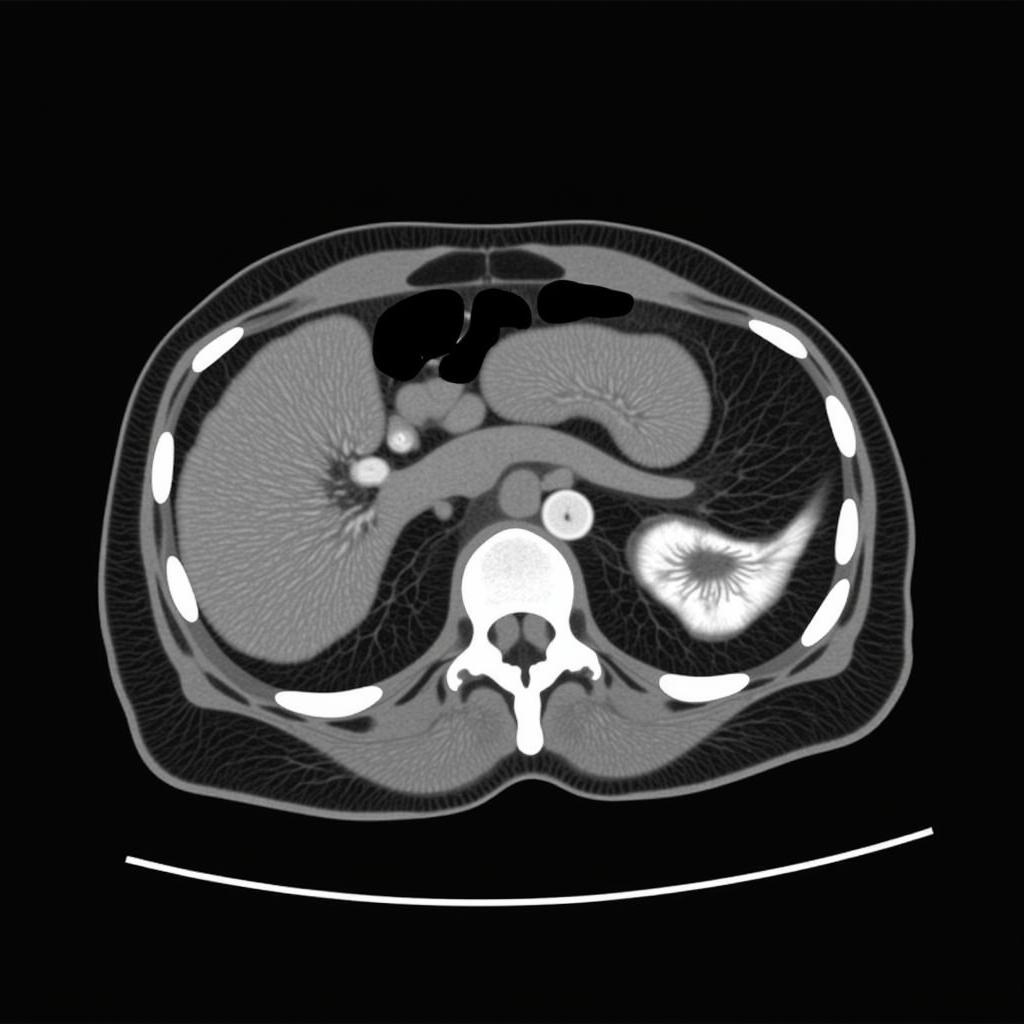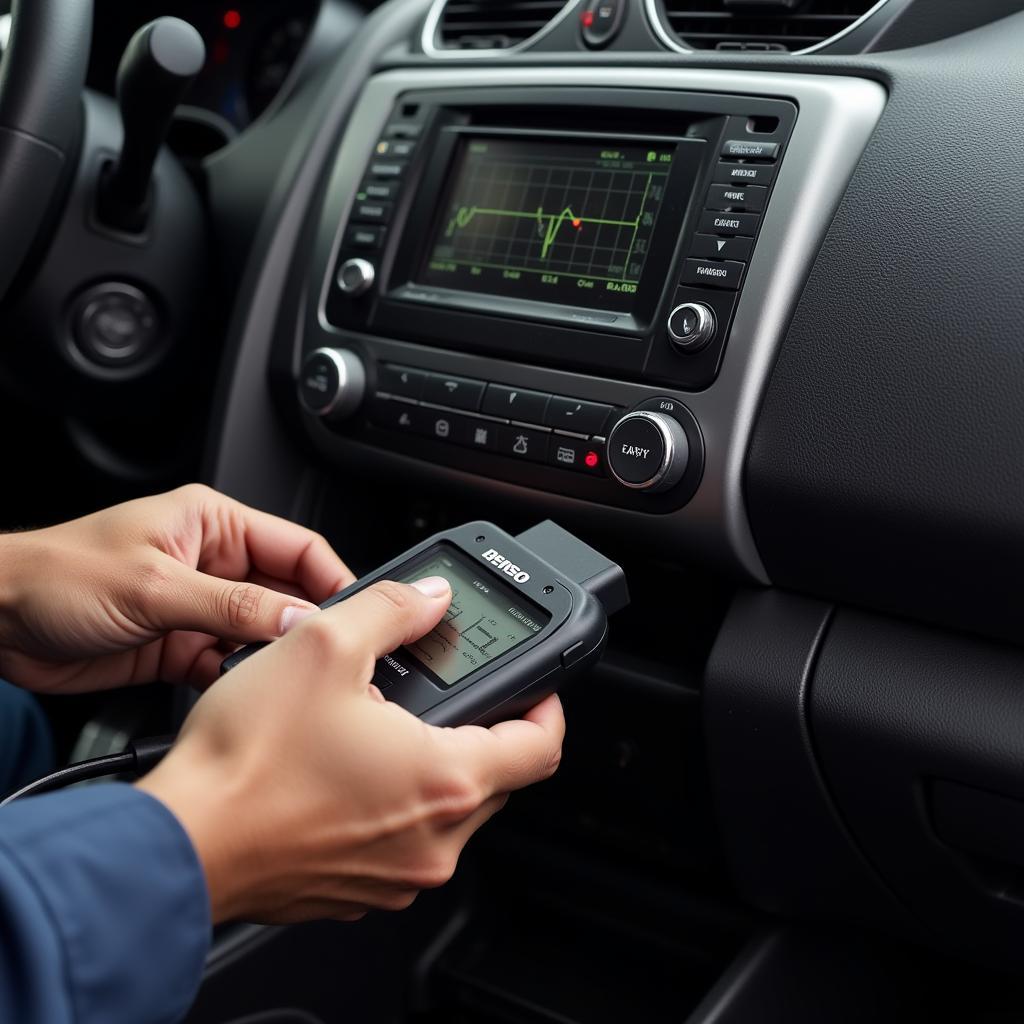A Misfire Diagnostic Tool is essential for any mechanic or car enthusiast. Understanding how to effectively use these tools can save you time, money, and frustration. This guide will delve into the intricacies of misfire diagnostics, offering practical advice and expert insights to help you quickly identify and resolve misfire issues. Let’s explore the world of misfire diagnostic tools and empower you to tackle those pesky engine problems head-on. After reading this, you’ll understand how a misfire diagnostic tool can be your best friend in the garage. You can also check out the new Generex diagnostic tool for more options.
Understanding the Importance of a Misfire Diagnostic Tool
A misfiring engine not only reduces performance and fuel efficiency but can also lead to more serious problems like catalytic converter damage. A misfire diagnostic tool helps pinpoint the root cause of the misfire, eliminating guesswork and unnecessary part replacements. These tools can range from simple OBD code readers to advanced diagnostic software and oscilloscopes. Choosing the right tool depends on your needs and budget. For example, the Hawkeye diagnostic tool for Land Rover vehicles is a specialized option for owners of this brand.
Addressing a misfire quickly and effectively is key to maintaining the health and longevity of your engine. A misfire diagnostic tool empowers you to do just that, providing valuable data and insights into your engine’s performance. What are the different types of misfire diagnostic tools? Let’s find out.
Types of Misfire Diagnostic Tools
There’s a wide range of misfire diagnostic tools available, each with its own set of features and capabilities. Some common types include:
- OBD-II Scanners: These handheld devices read diagnostic trouble codes (DTCs) stored in the vehicle’s computer, providing clues about the misfire.
- Advanced Diagnostic Scanners: These tools offer more in-depth data analysis, including live data streams, sensor readings, and actuation tests.
- Oscilloscopes: These tools allow you to visualize electrical signals within the ignition system, helping to identify issues with spark plugs, wires, or coils.
- Pressure Transducers: These tools measure cylinder pressure, providing crucial information about combustion efficiency and potential mechanical problems.
Choosing the right tool depends on your technical expertise and the depth of diagnosis you require.
 OBD2 scanner connected to car's diagnostic port
OBD2 scanner connected to car's diagnostic port
How to Use a Misfire Diagnostic Tool Effectively
Using a misfire diagnostic tool effectively involves more than just plugging it in and reading codes. Here’s a step-by-step guide to help you get the most out of your tool:
- Identify the Symptoms: Before connecting any tool, note the specific symptoms of the misfire, such as rough idling, hesitation, or loss of power.
- Connect the Tool: Locate the vehicle’s diagnostic port (usually under the dashboard) and connect the misfire diagnostic tool.
- Retrieve Diagnostic Trouble Codes (DTCs): Initiate the code retrieval process on your tool. Note down all the codes displayed, as they can provide valuable clues.
- Interpret the Codes: Use a reliable source, like a repair manual or online database, to decipher the meaning of the DTCs.
- Live Data Analysis: If your tool allows, monitor live data streams like engine RPM, fuel pressure, and ignition timing to identify any anomalies.
- Perform Additional Tests: Based on the DTCs and live data, conduct further tests as needed, such as checking spark plugs, fuel injectors, or compression.
For Land Rover owners, consider the Hawkeye diagnostic tool for Land Rover vehicles to effectively address this issue. Having the right tools for the job is crucial.
“A common mistake is simply replacing parts based on codes without further investigation. A misfire diagnostic tool is a guide, not a definitive answer. Always follow up with thorough testing,” advises John Smith, ASE Certified Master Technician.
Advanced Diagnostic Techniques
For more complex misfire issues, advanced diagnostic techniques might be required. These include:
- Relative Compression Testing: This method compares the compression between cylinders, helping to identify weak or damaged cylinders.
- Ignition System Analysis with an Oscilloscope: This allows you to visualize the electrical activity of the ignition system, pinpointing issues with spark plugs, wires, or coils.
- Fuel Injector Testing: This involves checking the fuel injectors for proper spray pattern and flow rate.
You might find resources such as CANOBD2 diagnostic tool instructions useful for a deeper understanding.
Why Invest in a Quality Misfire Diagnostic Tool?
Investing in a quality misfire diagnostic tool is a wise decision for both DIYers and professionals. Here’s why:
- Saves Time and Money: By accurately diagnosing the problem, you can avoid unnecessary part replacements and costly labor charges.
- Improves Efficiency: Quickly identifying the root cause of a misfire gets your vehicle back on the road faster.
- Enhances Your Skills: Learning to use a misfire diagnostic tool empowers you to take control of your vehicle’s maintenance and repairs.
 Mechanic using an oscilloscope for advanced diagnostics
Mechanic using an oscilloscope for advanced diagnostics
“A reliable misfire diagnostic tool is an indispensable asset for any mechanic. It allows us to provide faster and more accurate diagnoses, ultimately saving our customers time and money,” shares Maria Garcia, Lead Technician at Auto Experts. Another valuable resource you can look into is the Wauker Nueson active diagnostic tool codes.
Conclusion
A misfire diagnostic tool is crucial for efficiently diagnosing and resolving engine misfires. By understanding the different types of tools available and how to use them effectively, you can save time, money, and ensure your vehicle runs smoothly. Remember to always interpret the data carefully and perform additional tests as needed. Don’t hesitate to contact us at ScanToolUS for any assistance with your misfire diagnostic needs. We can be reached at +1 (641) 206-8880 or you can visit our office at 1615 S Laramie Ave, Cicero, IL 60804, USA.
FAQ
- What are the common causes of engine misfires? Common causes include faulty spark plugs, ignition coils, fuel injectors, or low compression.
- Can a bad oxygen sensor cause a misfire? While a faulty oxygen sensor can affect engine performance, it doesn’t directly cause a misfire.
- How often should I check for misfires? Regularly monitoring your vehicle’s performance and addressing any unusual symptoms promptly is crucial.
- Is it safe to drive with a misfiring engine? Driving with a misfire can damage your catalytic converter and other engine components, so it’s best to address the issue as soon as possible.
- Can I fix a misfire myself? Simple misfires, like replacing spark plugs, can be DIY projects. However, more complex issues might require professional assistance.
- What are the signs of a misfiring engine? Common signs include rough idling, hesitation, loss of power, and decreased fuel efficiency.
- How much does a misfire diagnostic tool cost? Prices vary depending on the type and features of the tool, ranging from affordable OBD-II scanners to more expensive professional-grade equipment.



